
Bibliography (UK edition)
(there is a US version for American readers since there is some variation between UK and US books)
Megaliths have attracted the attention of many writers, here is a run-down of many of the books I have read about the subject. I've started with the ones that I have found most rewarding. Some are old and therefore no longer available, but many are available through Amazon.co.uk. Just click on the Amazon logo associated with a title and you can order your own copy right away! Note that jacket designs sometimes change with different editions - Amazon's copy will be the current picture.
By their very nature alternative views tend to be more colourful and varied than the 'establishment' archaeological texts. This bibliography is taken from across the whole spectrum of thought so you, dear reader, can draw your own conclusions. Listings are divided into the archaeological and descriptive books first, best for finding stones and knowing how to get to them. The next sections covers local knowledge - books which cover a small and specific area, usually written by local people with an excellent knowledge of their own region. These usually drawn on a wide range of local sources and often shown many more sites than books covering the whole country. They are an excellent read if you will be staying in the area for more than a day or so, often also covering local myths and legends. The next listing a titles covering alternative approaches from a range of viewpoints - from the popular author M Scott Peck with his lovely description of his passion for megalithic sites to whole new ways of interpreting the stones.
From the archaeologists viewpoint
and usually the best guides to locating stones, though Julian Cope's The Modern Antiquarian has a very comprehensive illustrated guide making up the second half of the book.
Aubrey Burl
No bibliography of British megalithic remains would be complete without reference to the work of Aubrey Burl, an archaeologist who has written many books on the subject, visited them extensively and performed archaeological field-work.. One feels that he has at some inkling of the mystique of ancient sites, though this doesn't affect the objectivity of his text :-)
Circles of Stone
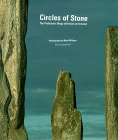 Photos by Max Milligan, with text by Aubrey Burl,
Harvill Press, 1999, ISBN: 1860466613
Photos by Max Milligan, with text by Aubrey Burl,
Harvill Press, 1999, ISBN: 1860466613
Lavishly illustrated book with top quality photography of the stones at different times of the day and seasons. More of a photo book of the top sites than a comprehensive gazetteer or overall guide ot the archaeology, though Aubrey Burl contributes his own insights in the introduction and some of the short descriptions of the sites.
A Guide to the Stone Circles of Britain, Ireland and Brittany
 Aubrey Burl, Yale University Press 1995, ISBN
0-300-06331-8
Aubrey Burl, Yale University Press 1995, ISBN
0-300-06331-8
Excellent little guide to all the stone circles - if you are looking for standing stones, dolmens or rows then you won't find them here. Selective it may be, but this is top class little guide book, striking the right balance between useful details of how to get to the circles on the ground, background info and archaeological snippets. Buy it! if you're looking for sites on the ground - it will save you lots of time!
From Carnac to Callanish (the prehistoric stone rows and avenues of Britain, Ireland and Brittany),
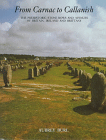 Aubrey Burl, Yale University Press, ISBN
0-300-05575-7, 1993
Aubrey Burl, Yale University Press, ISBN
0-300-05575-7, 1993
Good all-rounder with a more detailed treatment than Rings of Stone. Unusually for Aubrey Burl, this one book covers standing stones, circles and rows. Well illustrated with black and white photographs and diagrams.
The Stone Circles of the British Isles,
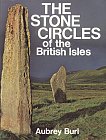 Aubrey Burl, Yale University Press 1976, ISBN
0-300-02398-7
Aubrey Burl, Yale University Press 1976, ISBN
0-300-02398-7
Readable and detailed treatise on the subject of stone circles, and a standard work. It isn't designed as a gazetteer - the way he hops around the British Isles can be distracting in the field (Burl's A Guide to the Stone Circles of Britain, Ireland and Brittany is an excellent gazetteer). If it is understanding and comparison of the different constructional styles you can't beat this one for the depth of his analysis while staying sensitive to the subject.
Prehistoric Avebury
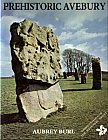 Aubrey Burl, Yale University Press 1979 rep 1986, ISBN
0-300-03622-1, rev 2002 ISBN 0-300-090870
Aubrey Burl, Yale University Press 1979 rep 1986, ISBN
0-300-03622-1, rev 2002 ISBN 0-300-090870
A fine description of the mystery that is Avebury - an entire village encompassed by a megalithic ring.
The Second Edition 2002 is considerably revised
Rings Of Stone (the prehistoric stone circles of Britain and Ireland),
Aubrey Burl, Frances Lincoln/Book Club Associates, 1979
Nicely written for the intelligent layman, this is a good all-round introduction to what stone circles are all about. Mainly about stone circles...
Prehistoric Monuments of Avebury
Caroline Malone, English Heritage, London, 1990, ISBN 1 85074 253 7
Megalithic Mysteries
Michael Balfour, Dragon's World, ISBN 1-85028-163-7
A sumptuously illustrated coffee table book, this shows how standing stones should be photographed to great effect. I love it - and with its economical text it never has to come off the fence as far as any interpretation of who or why - the stones are left to speak for themselves... It is eclectic rather than exhaustive - covering Europe in one volume much is left out. I would love to have the author's travel budget :-)
The Henge Monuments: Ceremony and Society in Prehistoric Britain
Geoffrey Wainwright, Thames & Hudson, 1989
Dr Wainwright excavated several of the henge monuments between 1966 and 1971 - to him is attributed the discovery that many of these once held massive wooden structures (derived from the post-holes left behind as the wood rotted away). These evocative structures help us place the stone circles in better context, and perhaps may explain some of the woodworking techniques (such as the mortice and tenon joints at Stonehenge) executed in stone at Stonehenge
Stonehenge
Stonehenge is unique enough to deserve its own section, and these books take Stonehenge as the main theme.
Stonehenge: Mysteries of the Stones and the Landscape
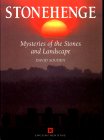 David Souden,published by Collins & Brown in
association with English Heritage 1997, ISBN 1-85585 291 8
David Souden,published by Collins & Brown in
association with English Heritage 1997, ISBN 1-85585 291 8
One of the best general introductions to what Stonehenge is and the stages of its construction, Souden also covers the wealth of remains in the immediate area. Well illustrated with photographs and drawings with an easy writing style.
Stonehenge Complete,
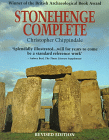 Christopher Chippindale,Thames&Hudson 1994,
ISBN 0-500-27750-8
Christopher Chippindale,Thames&Hudson 1994,
ISBN 0-500-27750-8
An archaeologist of the old school with zero tolerance for the alternative and the fringe, delivering himself of the immortal quote "Much of what has been written about Stonehenge is derivative, second-rate or plain wrong.". Chippindale still comes up with a highly readable though one-sided look both at the history of Stonehenge - and the history of the history of Stonehenge from Inigo Jones' Roman theorising to the latest alternative fringe. I'd like to have seen a bit more about Stonehenge itself and a little less of the history of the history, but recommended for scholars of Stonehenge nevertheless.
Stonehenge In Its Landscape
Rosamund Cleal, R.Montague, K.E.Walker
Definitive archeological text detailing the archaeological surveys of Stonehenge and its environs with full diagrams and reports. This is the last word on the scientific discoveries of the site - though it is not cheap!
Stonehenge, Neolithic Man and the Cosmos
 John North, Harper & Collins 1996, ISBN 0 00
255850 5
John North, Harper & Collins 1996, ISBN 0 00
255850 5
As the sub-title suggests, John North's emphasis is on astronomical alignments. The subject gets a competent and scholarly approach which is rare in the field of archaeoastronomy, but North's writing remains approachable and understandable by the intelligent layman. Highly recommended for those interested in astronomical alignments of megalithic structure, this book comers the subject in fascinating depth. I find myself not entirely convinced of some of his hypotheses, but they are well-argued, and his argument for a winter solstice sunset alignment rather than the opposite popularly known midsummer solstice sunrise alignment is very convincing.
The Making of Stonehenge
The Making of StonehengeRodney Castleden, Routledge, 1993, ISBN 0-415-08513-6
A good read and a thorough description of the archaeology of Stonehenge and its environs. The perspective also covers much more about the people who made Stonehenge and what we can infer about them, which adds colour to the archaeology. Unlike the colour added by conjecture and speculation, however, this author draws on the academic studies and theorems of modern archaeology. Readable but still authentic - a good combination for those who want more than the Stonehenge guidebook.
Science and Stonehenge
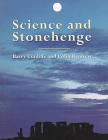 Barry Cunliffe and Colin
Renfrew, Oxford University Press, ISBN 0-19-726174-4
Barry Cunliffe and Colin
Renfrew, Oxford University Press, ISBN 0-19-726174-4
This scientific reference is not written with the layman in mind, but it has to be a definitive reference for scholars researching Stonehenge. It is a collection of papers presented at the Royal Society symposium "Science and Stonehenge" 20-21 March 1996. As such it the contents are not always honed to be easy for the layman reader. As a goldmine of raw studies, data, fieldwork and cutting-edge theory it is excellent. Some of the data helped me develop the computer modelling used for the "Stonehenge past" illustrations on this web-site
Stonehenge -
The late Professor Atkinson contributed much to the archaeology of Stonehenge with his careful fieldwork and thorough interpretation. This is his take on the subject!
Stonehenge and neighbouring monuments
RJC Atkinson, English Heritage, 1987 rep 1993, ISBN 1 85074 172 7
You can't beat this English Heritage guidebook which is available from the Stonehenge shop for value, and as a quick introduction to the essential points of Stonehenge the easily readable text and excellent illustrations this is a must-have for the visitor to the site.
It really is best to have got it and at least glance through it before you visit Stonehenge - so much more of what you see will make sense in the light of the knowledge. Tragically the shop on site is arranged so that most people will check it out after they have seen the Stones.
The late Professor Atkinson was closely involved with Stonehenge and contributed greatly to what is known about the monument as a result of his careful fieldwork and study spanning many years, and thorough knowledge of prior work.
Local Knowledge
Local knowledge adds detail and coherency to some of these descriptions from people living in the area of their local megalithic sites.
The Stones Around Callanish
The Stones around CallanishGerald & Margaret Ponting, Rev 1993 Margaret Curtis & Ron Curtis ISBN 0 9505998 9 1
A delightful little booklet written by a couple who upped and left the flatness of East Anglian Suffolk to live on the Isle of Lewis. Though the typesetting and reproduction is execrable - soot'n'whitewash photos and ragged dot-matrix printing from an old BBC 8-bit micro in the best underground 'zine tradition, this nevertheless is a mine of information about the Callanish megaliths written with impeccable local knowledge.
Written from a generally archaeological viewpoint, astronomical alignments also feature extensively in the analysis.
The Stone Circles of Cumbria
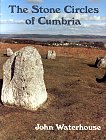 John Waterhouse, Phillimore, 1985, ISBN 0 85033
566 3
John Waterhouse, Phillimore, 1985, ISBN 0 85033
566 3
Detailed book on the stone circles of Cumbria written from a thorough archaeological background, with many plans of the sites as well as information on how to get to the circles. Many days of hill-walking to be had here!
Ancient Stones of Dorset
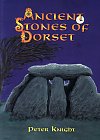 Peter Knight, Power Publications, 1996, ISBN 1
898073 12 0
Peter Knight, Power Publications, 1996, ISBN 1
898073 12 0
Peter Knight's style at times ventures on the 'alternative evangelical' and I can find no excuse for the dreadful self-penned poem at the beginning of the book. Nevertheless the author has come up with a very comprehensive description of standing stones and sites in Dorset, interspersed with extra snippets of historical information, and many details of ley lines, plans and sketches.
The Ancient Stones of Wales
 Chris Barber and John Godfrey Williams, Blorenge
Books, ISBN 0 9510444 7 8
Chris Barber and John Godfrey Williams, Blorenge
Books, ISBN 0 9510444 7 8
Well illustrated book with a lot of local knowledge, this book is in two parts - a gently alternative overview of the various types of megaliths. Plenty of examples are drawn from all over Wales, and the second half of the book is a comprehensive gazetteer of Welsh megalithic sites.
Hidden Heritage - Discovering Ancient Essex
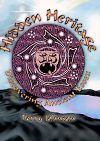 Hidden Heritage - Discovering Ancient Essex, Terry
Johnson, ISBN 1-898307-70-9
Hidden Heritage - Discovering Ancient Essex, Terry
Johnson, ISBN 1-898307-70-9
Plenty of local knowledge in this enthusiastic overview of the pre-christian symbolism to be had in Essex - standing stones, Green Men and sheela-na-gigs. At times enthusiasm gets the better of Terry Johnson, for instance in the large section on ley lines, but this is more than compensated by the comprehensive coverage and a good gazetteer. Fans of pagan iconography in Christian churches will find plenty here. The East of England isn't noted for megalithic sites due to general dearth of stone in the region, but Terry does us a service by highlighting a number of possible old stones. Not all are prehistoric and some may just be there by chance.
Ancient Sites in West Penwith
Cheryl Straffon, Meyn Mamvro Publications, ISBN 0 9518859 0 1
Nice little guide to the stones at the extreme end of Cornwall. in the Penzance region
Alternative
In Search Of Stones
 M Scott Peck, Simon & Schuster, 1995, ISBN 0
671 00476 X
M Scott Peck, Simon & Schuster, 1995, ISBN 0
671 00476 X
Well known writer M Scott Peck (The Road Less Travelled, The Different Drum, People of the Lie) also had a bit of a thing about standing stones. Not only is this a good read about an American couple puzzled by the quaint otherness of British ways, but it gives a good feel for what makes megaliths special to some of us.
The Modern Antiquarian
 Julian Cope, Thorsons, 1998, ISBN: 0722535996
Julian Cope, Thorsons, 1998, ISBN: 0722535996
Julian Cope brings his own unique perspective to prehistory in the first part, which is not totally convincing to me, but his gazetteer and pictures in the second part of the book is the most comprehensive illustrated print version I have come across and makes this book well worth it!
 The Old Straight Track
The Old Straight Track
Alfred Watkins, Aquarian Press, Thorson's Publishing, ISBN 0349137072, 1927 rep 1989
Alfred Watkins was the author of the original text "The Old Straight Track" which postulated linear alignments of sacred sites.
Places of Power
 Paul Devereux, Blandford, London, 1990, ISBN 0 7137 2215 0
Paul Devereux, Blandford, London, 1990, ISBN 0 7137 2215 0
A review of the results of the late Seventies/eighties project "The Dragon Project" which looked for physical evidence of earth energies. Though some have described this as showing a null result there seems to be enough measurable and unusual to warrant further study. Being aimed at a general readership, the emphasis is on interpretation rather than peer review, so there is not enough detail to reproduce the measurements...
Circles of Silence
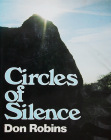 Don Robins, Souvenir Press, 1985, ISBN 978-0285626850
Don Robins, Souvenir Press, 1985, ISBN 978-0285626850
The most detailed report of preliminary results of the late Seventies/eighties project "The Dragon Project" which looked for physical evidence of earth energies.
Earth Magic
 Frances Hitching, Picador, London, 1977, ISBN 978-0330252300
Frances Hitching, Picador, London, 1977, ISBN 978-0330252300
Late 1970s book on stones which comes in two parts, Part 1 the orthodox view and part two includes alternative views
It is notable for the experiment where dowser Bill Lewis claimed the standing stone near Crickhowell emitted a force he could sense. Hitching brought in a physicist from Imperial College, Eduardo Balanovski, who measured the stone with a gaussmeter (magnetometer) it gave a reading that was significantly anomalous relative to background reference (about half a gauss or 50µT, of a similar order to the Earth's natural magnetic field)
Ley Lines in Question
 Tom Williamson, Liz Bellamy, 1983, Windmill Press, ISBN 0 437 19205 9
Tom Williamson, Liz Bellamy, 1983, Windmill Press, ISBN 0 437 19205 9
A skeptical rebuttal of one of the more beautiful myths of the Earth Mysteries scene, that prehistoric humans had created a network of monuments aligned on straight, intervisible lines, harnessing an invisible and technologically undetectable energy. By the end of the 1980s this form of the ley-line vison was in serious retreat, as was drafting straight line alignments on maps. This book was part of this process.